
Rethymno: A Timeless Gem on Crete's Coastline
Discover Rethymno: A magical blend of Venetian charm, Ottoman heritage, and stunning natural beauty on Crete's captivating coastline.
Rethymno, a charming town on the north coast of Crete, Greece, is a perfect blend of history, culture, and natural beauty. With its roots stretching back to the Minoan civilization, Rethymno has a rich tapestry of Venetian and Ottoman influences that are evident in its architecture and layout. The Old Town is a labyrinth of narrow streets, filled with Renaissance buildings, vibrant shops, and cozy tavernas, offering visitors a delightful journey through time. One of the highlights of Rethymno is its stunning Venetian Harbor, which is dotted with colorful fishing boats and lined with waterfront cafes and restaurants. Here, you can savor fresh seafood while enjoying views of the shimmering Mediterranean Sea. The imposing Fortezza, a 16th-century fortress, stands guard over the town and offers panoramic vistas of the surrounding area, making it a must-visit for history enthusiasts and photographers alike. Beyond its historical allure, Rethymno boasts beautiful sandy beaches that stretch for miles, providing ample opportunities for relaxation and water sports. The nearby Mount Ida, the highest peak in Crete, is perfect for hiking and exploring the island's unique flora and fauna. Whether you are a history buff, a nature lover, or simply looking to unwind, Rethymno has something for everyone.
Local tips in Rethymno
- Visit the Old Town early in the morning to avoid the crowds and enjoy a peaceful stroll.
- Try the local delicacy, 'Kalitsounia,' a sweet cheese pastry that's a favorite among locals.
- Wear comfortable shoes as the cobblestone streets can be uneven and slippery.
- Explore the Fortezza in the late afternoon to catch the sunset over the town and sea.
- Take a day trip to the Arkadi Monastery, a short drive from Rethymno, to learn about its significant role in Cretan history.
Rethymno: A Timeless Gem on Crete's Coastline
Rethymno, a charming town on the north coast of Crete, Greece, is a perfect blend of history, culture, and natural beauty. With its roots stretching back to the Minoan civilization, Rethymno has a rich tapestry of Venetian and Ottoman influences that are evident in its architecture and layout. The Old Town is a labyrinth of narrow streets, filled with Renaissance buildings, vibrant shops, and cozy tavernas, offering visitors a delightful journey through time. One of the highlights of Rethymno is its stunning Venetian Harbor, which is dotted with colorful fishing boats and lined with waterfront cafes and restaurants. Here, you can savor fresh seafood while enjoying views of the shimmering Mediterranean Sea. The imposing Fortezza, a 16th-century fortress, stands guard over the town and offers panoramic vistas of the surrounding area, making it a must-visit for history enthusiasts and photographers alike. Beyond its historical allure, Rethymno boasts beautiful sandy beaches that stretch for miles, providing ample opportunities for relaxation and water sports. The nearby Mount Ida, the highest peak in Crete, is perfect for hiking and exploring the island's unique flora and fauna. Whether you are a history buff, a nature lover, or simply looking to unwind, Rethymno has something for everyone.
Iconic landmarks you can’t miss
Venetian Fortezza Castle
Discover the captivating beauty and rich history of the Venetian Fortezza Castle in Rethimno, Crete, a must-visit landmark for every traveler.

Rimondi Fountain
Discover the beauty and history of Rimondi Fountain, a stunning Venetian landmark in the heart of Rethymno that captures the essence of local culture.
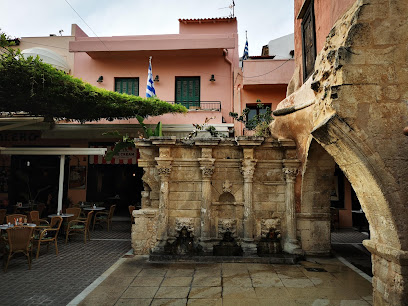
Guora gate
Explore the rich history and architectural beauty of Guora Gate, a remarkable landmark in Rethymno's enchanting old town, Greece.

Rethymnon Lighthouse
Discover the enchanting Rethymnon Lighthouse, a historical gem in Crete offering breathtaking views and a glimpse into the island's maritime past.

Central Gate of the Fortress of Rethymnon
Explore the Central Gate of the Fortress of Rethymnon, a stunning historical landmark showcasing Venetian architecture and breathtaking views of Crete's coastline.

Hellenic Australian Memorial
Explore the Hellenic Australian Memorial in Rethymno, a moving tribute to the shared history and sacrifices of Greece and Australia during World War II.

Breakwater of Rethymno
Discover breathtaking views and rich history at the Breakwater of Rethymno, a coastal gem in Crete perfect for relaxation and exploration.

Globe
Explore the Globe in Rethymno, where stunning landscapes meet rich Cretan culture, offering an unforgettable experience for every traveler.
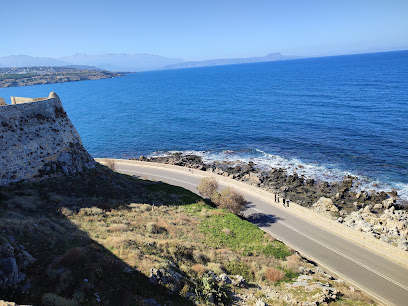
Pyritidapothḗkē
Explore the historical treasure of Pyritidapothēkē in Rethymno, where every corner tells a story of Crete's rich past and vibrant culture.

Venetian Clock Tower footprint
Explore the rich history of Crete at the Venetian Clock Tower, a stunning historical landmark in the heart of Rethymno that showcases timeless architecture.

Unmissable attractions to see
Venetian Fortezza Castle
Discover the Venetian Fortezza Castle, a historical gem in Rethimno, Crete, offering rich history, stunning architecture, and breathtaking sea views.

Rimondi Fountain
Explore Rimondi Fountain in Rethymno, a stunning historical landmark showcasing Venetian architecture amidst a vibrant atmosphere.

Rethymnon Municipal Garden
Explore the lush beauty of Rethymnon Municipal Garden, a serene city park filled with vibrant flora and tranquil pathways in the heart of Rethymno.

Guora gate
Explore the enchanting Guora Gate in Rethymno, a historical landmark that embodies the essence of Crete's rich cultural heritage.

Rethymnon beach
Discover the beauty of Rethymnon Beach, a stunning coastal gem in Crete, perfect for sunbathing, water sports, and exploring local culture.

Biotopoi of Crete Nature Park
Explore the lush landscapes and diverse wildlife of Biotopoi of Crete Nature Park, an ecological paradise in Rethymno, perfect for nature lovers and families.

Paleontological Museum of Rethymno
Discover the ancient world at the Paleontological Museum of Rethymno, where history comes alive through fascinating fossils and engaging exhibits.

Προκυμαία Ρεθύμνου
Discover the historical wonders of the Fortezza of Rethymno, where Venetian architecture meets breathtaking Mediterranean views.

Breakwater of Rethymno
Discover the breathtaking views and rich heritage at the Breakwater of Rethymno, a perfect blend of nature and history.

Globe
Explore Globe in Rethymno, where rich history meets vibrant culture, offering an unforgettable experience for every traveler.

BIO Chimney
Discover the historic BIO Chimney in Rethimno, a captivating tourist attraction blending history, culture, and stunning architecture for an unforgettable experience.

Candy Shop Mural
Explore the whimsical Candy Shop Mural in Rethimno, a vibrant tourist attraction filled with colorful candy-inspired art perfect for unforgettable photos.

Essential places to dine
Prima Plora Οrganic Restaurant & Wine Bar
Experience authentic Cretan flavors at Prima Plora Organic Restaurant & Wine Bar in Rethymno—where every meal tells a story.

To Pigadi Restaurant
Experience authentic Mediterranean cuisine at To Pigadi Restaurant in Rethymno – where fresh ingredients meet traditional flavors.
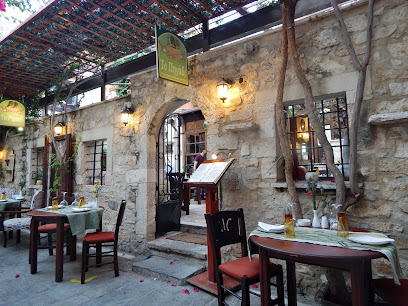
Vatania Taverna
Discover Vatania Taverna: A must-visit destination in Rethymno for authentic Greek dishes amidst a welcoming atmosphere.

Kapilio
Savor authentic Greek cuisine at Kapilio in Rethymno—where tradition meets taste in every dish.

7 Thalasses Rethymno Restaurant
Experience exquisite seafood dining at 7 Thalasses in Rethymno – where Mediterranean flavors meet exceptional service.

Stella's Kitchen
Experience authentic Cretan cuisine at Stella's Kitchen in Rethymno - where tradition meets flavor in every bite.

Dome
Discover Dome in Rethymno: Savor authentic Greek flavors and mouthwatering pizzas in an inviting setting.

Thymari
Experience authentic Greek cuisine at Thymari in Rethymno, where tradition meets innovation in every dish.

Elaia Restaurant
Experience authentic Greek cuisine at Elaia Restaurant in Rethymno - where tradition meets flavor in an inviting atmosphere.

Galini Restaurant
Discover the essence of Greek cuisine at Galini Restaurant in Rethymno - where tradition meets flavor in a picturesque setting.

Markets, malls and hidden boutiques
The Olive Garden | Premium Greek Natural Cosmetics, Beach Road shop
Explore the essence of Greek beauty at The Olive Garden, your go-to destination for premium natural cosmetics and perfumes in Rethymno.

rethymno souvenir center
Explore authentic Cretan craftsmanship at Rethymno Souvenir Center, a premier stop for unique Greek souvenirs and artisanal treasures.

Tourist Store Kalimera (G. Liokalos)
Explore the essence of Greek fashion and culture at Tourist Store Kalimera in Rethymno, where unique clothing and authentic souvenirs await.

Souvenirs Store Rethymno Shopping
Explore Rethymno's captivating souvenir store for unique crafts, musical instruments, and delightful keepsakes that embody the spirit of Crete.

Alda
Explore Alda in Rethymno for unique local gifts, handcrafted souvenirs, and a taste of authentic Cretan culture.

Greek Unique Concept Gift Store
Explore one-of-a-kind Greek souvenirs and gifts at Rethymno's Greek Unique Concept Gift Store, a treasure trove of local culture and artistry.

ANTIQUE - CRETE
Uncover unique antiques and cultural treasures at Antique - Crete, a must-visit store in Rethymno for history enthusiasts and collectors.

Meiz Boutique
Explore Meiz Boutique in Rethymno for stylish women's clothing and unique accessories that capture the essence of Greek fashion.
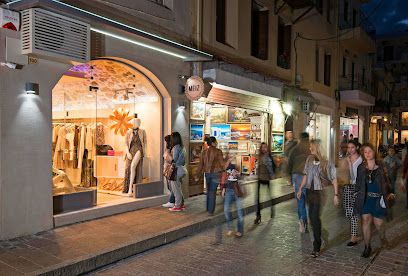
Hand Made Leather Goods
Discover exquisite craftsmanship at Hand Made Leather Goods in Rethymno—where every piece tells a story and embodies Cretan tradition.

Apostolakis Store
Explore Apostolakis Store in Rethymno for an unforgettable shopping experience filled with unique souvenirs, beachwear, and local crafts.
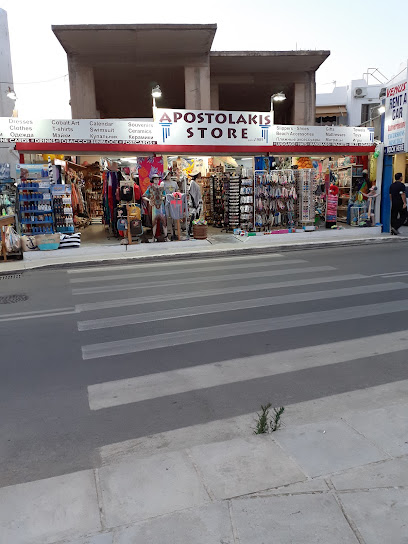
Essential bars & hidden hideouts
Fraoules
Discover the cozy charm of Fraoules in Rethymno, where excellent coffee meets delicious cuisine in a welcoming atmosphere that invites relaxation.

LivingRoom GastroBar Rethymnon
Experience the vibrant flavors of Mediterranean cuisine and crafted cocktails at LivingRoom GastroBar in Rethymnon.

Bora Bora
Experience the tropical vibes of Bora Bora, a cocktail bar that offers exquisite drinks, delightful coffee, and Mediterranean cuisine in Rethymno.

Monitor Art Café
Discover the artistic vibes and refreshing drinks at Monitor Art Café, Rethymno's treasure for culture and relaxation.
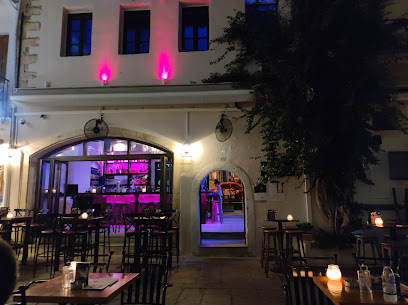
Nafpigio
Discover Nafpigio, a stylish cocktail bar in Rethymno, where exquisite drinks and a cozy atmosphere await every visitor.

Home Seaside | Cocktail Bar
Discover the perfect blend of cocktails and coffee at Home Seaside, a picturesque bar along the coast of Rethymno, Greece.

Antika Irish Bar
Experience the vibrant nightlife at Antika Irish Bar in Rethymno, where great drinks, live music, and a cozy atmosphere await.

DRINK N ROLL
Discover Rethymno's vibrant cocktail culture at Drink N Roll, where every sip is a celebration of flavor and fun in a lively atmosphere.

Ananas Cocktail Bar
Experience the vibrant nightlife at Ananas Cocktail Bar in Rethymno, where expertly crafted cocktails meet a lively atmosphere.

Hunky Funky Cocktail Bar
Discover the vibrant nightlife of Rethymno at Hunky Funky Cocktail Bar, a must-visit destination for creative cocktails and lively atmosphere.

Local Phrases
-
- HelloΓεια σας
[Yia sas] - GoodbyeΑντίο
[Adio] - YesΝαι
[Ne] - NoΌχι
[Ochi] - Please/You're welcomeΠαρακαλώ
[Parakalo] - Thank youΕυχαριστώ
[Efharisto] - Excuse me/SorryΣυγνώμη
[Signomi] - How are you?Πώς είστε;
[Pos iste?] - Fine. And you?Καλά. Εσείς;
[Kala. Esis?] - Do you speak English?Μιλάτε αγγλικά;
[Milate anglika?] - I don't understandΔεν καταλαβαίνω
[Den katalaveno]
- HelloΓεια σας
-
- I'd like to see the menu, pleaseΘα ήθελα να δω το μενού, παρακαλώ
[Tha ithela na do to menou, parakalo] - I don't eat meatΔεν τρώω κρέας
[Den troo kreas] - Cheers!Υγεία!
[Iyia] - I would like to pay, pleaseΘα ήθελα να πληρώσω, παρακαλώ
[Tha ithela na plirosou, parakalo]
- I'd like to see the menu, pleaseΘα ήθελα να δω το μενού, παρακαλώ
-
- Help!Βοήθεια!
[Voeetheea] - Go away!Φύγε!
[Fige] - Call the Police!Καλέστε την Αστυνομία!
[Kaleste tin Astinomia] - Call a doctor!Καλέστε γιατρό!
[Kaleste giatro] - I'm lostΈχω χαθεί
[Eho hathi] - I'm illΕίμαι άρρωστος
[Ime arrostos]
- Help!Βοήθεια!
-
- I'd like to buy...Θα ήθελα να αγοράσω...
[Tha ithela na agoraso] - I'm just lookingΑπλά κοιτάω
[Apla kitao] - How much is it?Πόσο κοστίζει;
[Poso kostizi?] - That's too expensiveΑυτό είναι πολύ ακριβό
[Afto ine poli akribo] - Can you lower the price?Μπορείτε να μειώσετε την τιμή;
[Boreite na miosete tin timi?]
- I'd like to buy...Θα ήθελα να αγοράσω...
-
- What time is it?Τι ώρα είναι;
[Ti ora ine?] - It's one o'clockΕίναι μία η ώρα
[Ine mia ee ora] - Half past (10)Μισή (10)
[Misi (deka)] - MorningΠρωί
[Proi] - AfternoonΑπόγευμα
[Apoyevma] - EveningΒράδυ
[Vradi] - YesterdayΧθες
[Hthes] - TodayΣήμερα
[Simera] - TomorrowΑύριο
[Avrio] - 1Ένα
[Ena] - 2Δύο
[Dio] - 3Τρία
[Tria] - 4Τέσσερα
[Tessera] - 5Πέντε
[Pente] - 6Έξι
[Exi] - 7Επτά
[Epta] - 8Οκτώ
[Okto] - 9Εννιά
[Ennia] - 10Δέκα
[Deka]
- What time is it?Τι ώρα είναι;
-
- Where's a/the...?Πού είναι ένα/το...;
[Pou ine ena/to...?] - What's the address?Ποια είναι η διεύθυνση;
[Pia ine ee diefthinsi?] - Can you show me (on the map)?Μπορείτε να μου δείξετε (στο χάρτη);
[Boreite na mou dixete (sto charti)?] - When's the next (bus)?Πότε είναι το επόμενο (λεωφορείο);
[Pote ine to epomeno (leoforeio)?] - A ticket (to ....)Ένα εισιτήριο (για το...);
[Ena eesiterio (ya to...)?]
- Where's a/the...?Πού είναι ένα/το...;
History of Rethymno
-
Rethymno's history can be traced back to the Minoan civilization, which flourished on Crete around 2000 BC. Archaeological evidence suggests that the area was inhabited by the Minoans, who established settlements and engaged in trade across the Mediterranean. The discovery of Minoan artifacts, such as pottery and frescoes, highlights the region's significance as a cultural and economic hub during this period.
-
During the Roman period, Rethymno, known as Rithymna, became an important city with a thriving economy based on agriculture and trade. The Romans constructed roads, buildings, and aqueducts, enhancing the region's infrastructure. Following the fall of the Roman Empire, Rethymno became part of the Byzantine Empire, where it continued to flourish until the Arab invasions of the 7th century.
-
In 1204, after the Fourth Crusade, Rethymno fell under Venetian control, marking a significant transformation in the city's architecture and culture. The Venetians fortified the city, building impressive structures such as the Fortezza, a massive fortress that dominates the skyline. This period brought prosperity, trade, and a blend of Venetian and local Cretan culture, evident in the city's charming old town with its narrow streets and Renaissance buildings.
-
The Ottoman Empire captured Rethymno in 1646, leading to a new era of cultural syncretism. The Ottomans introduced new architectural styles, mosques, and public baths, which coexisted with the remnants of Venetian architecture. This period also brought significant demographic changes, as the local population interacted with Ottoman settlers, shaping a unique cultural identity that persists in Rethymno's traditions and customs.
-
Rethymno played a crucial role during the Cretan Revolution against Ottoman rule in the late 19th century. The city was a center of resistance, and various uprisings took place, leading to periods of intense conflict. The struggle for autonomy culminated in the establishment of the Cretan State in 1898, which eventually led to the unification of Crete with Greece in 1913, marking a significant milestone in Rethymno's modern history.
Rethymno Essentials
-
Rethymno is conveniently located in the center of Crete, making it accessible from various neighborhoods. From Chania, you can take a KTEL bus that runs frequently, with a travel time of about 1 hour. From Heraklion, the capital city, KTEL buses also connect Rethymno in roughly 1.5 hours. For those arriving via the airport, a taxi or shuttle service can take you directly to Rethymno, which is approximately 70 km from Heraklion Airport.
-
Rethymno is a compact city, and many attractions are within walking distance. Local buses are available for longer distances, connecting Rethymno to nearby beaches and villages. Bicycles can be rented to explore the area more freely, with several bike rental shops available. Taxis are also an option, though they can be pricier. For those looking to venture further afield, consider renting a car for greater flexibility.
-
Rethymno is generally considered safe for tourists. However, standard precautions should be taken. Avoid poorly lit areas at night and keep your belongings secure in crowded places. While there are no specific high-crime areas, petty theft can occur, especially in tourist hotspots. Always stay vigilant and be aware of your surroundings.
-
In case of emergency, dial 112 for police, fire, or medical assistance. The local hospital is located in Rethymno, and several pharmacies are available for minor health issues. It is advisable to have travel insurance that covers emergencies. For lost or stolen items, report to the nearest police station, and keep copies of important documents in a safe place.
-
Fashion: Do dress modestly when visiting churches or monasteries. Don't wear beach attire in town. Religion: Do respect local customs; it's polite to cover your shoulders and knees in religious sites. Public Transport: Do offer your seat to elderly passengers. Don't play loud music on buses. Greetings: Do greet locals with a polite 'Kalimera' (Good morning). Eating & Drinking: Do try local dishes and enjoy the café culture. Don't waste food or refuse hospitality, as it's considered impolite.
-
To experience Rethymno like a local, visit the vibrant local markets, especially the one in the Old Town for fresh produce and traditional goods. Engage with local Cretans, who are often friendly and eager to share their culture. Check out the lesser-known tavernas away from the tourist paths for authentic Cretan cuisine. Don’t forget to explore the beautiful walking paths along the coastline for stunning views and a peaceful atmosphere.
Nearby Cities to Rethymno
-
Things To Do in Crete
-
Things To Do in Chania
-
Things To Do in Heraklion
-
Things To Do in Pyrgos
-
Things To Do in Santorini
-
Things To Do in Mykonos
-
Things To Do in Kalamata
-
Things To Do in Nafplio
-
Things To Do in Athens
-
Things To Do in Kos
-
Things To Do in Bodrum
-
Things To Do in Samos
-
Things To Do in Rhodes
-
Things To Do in Olympia
-
Things To Do in Kusadasi













